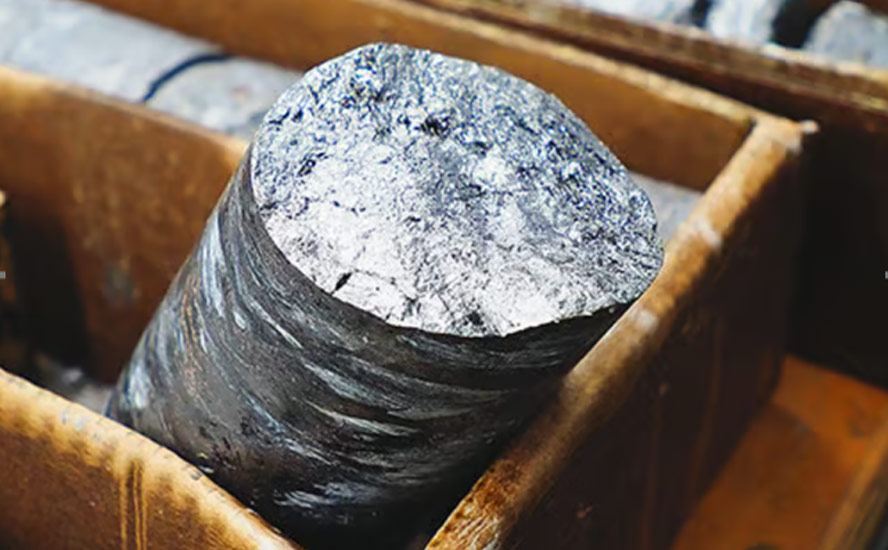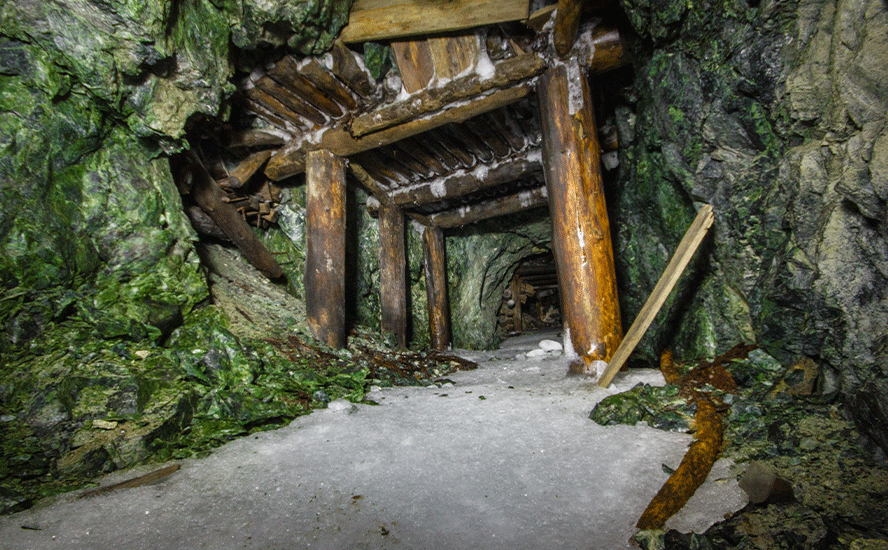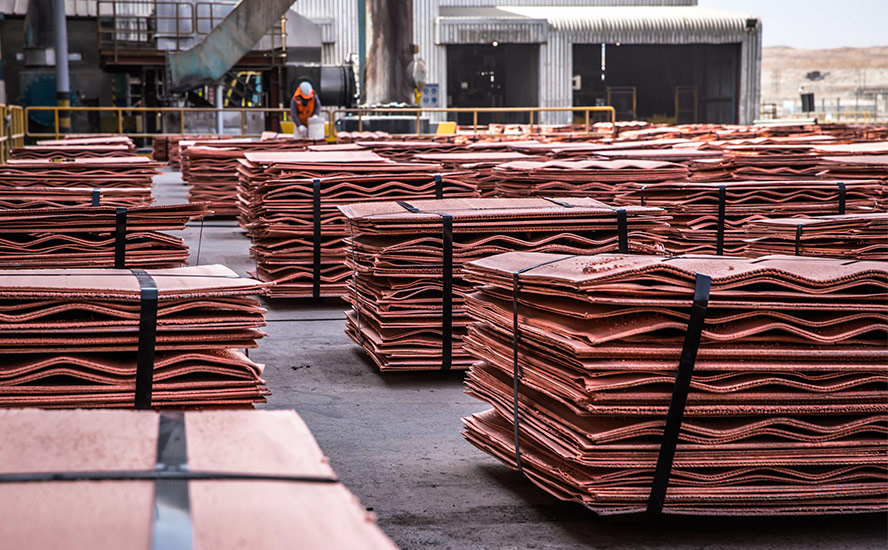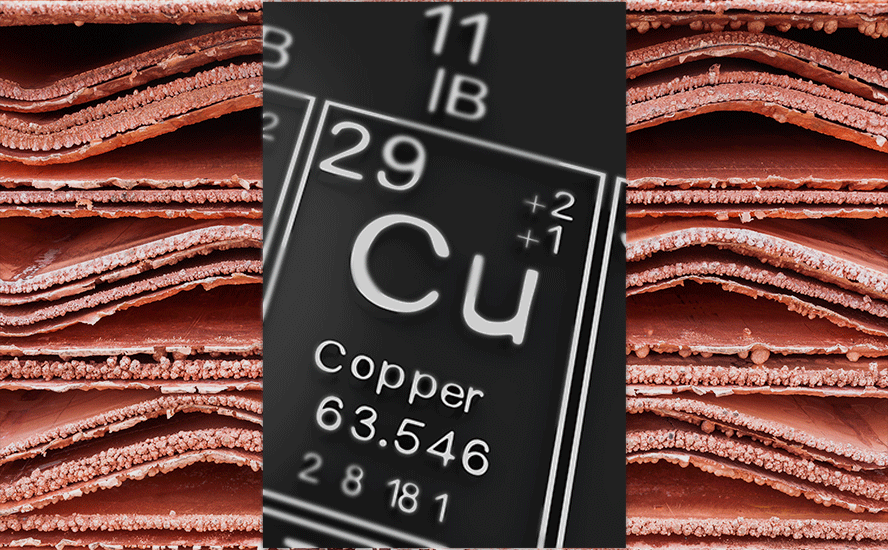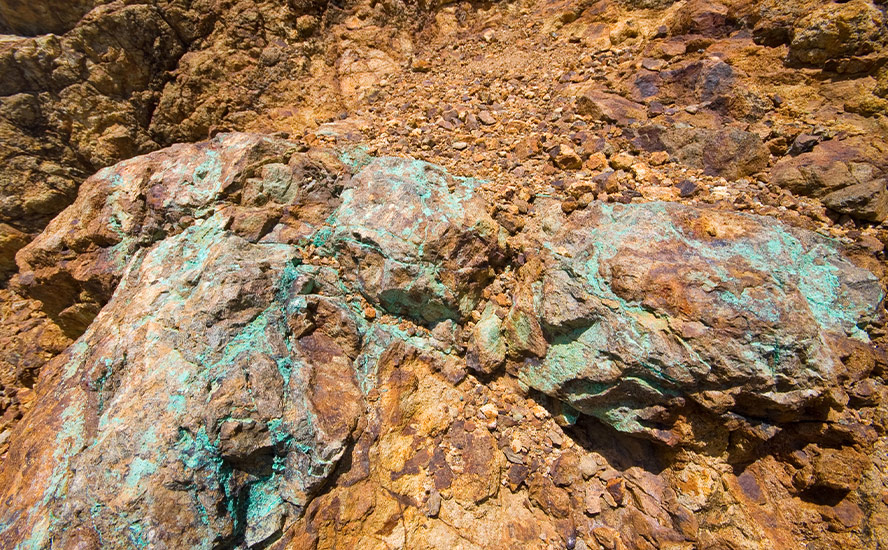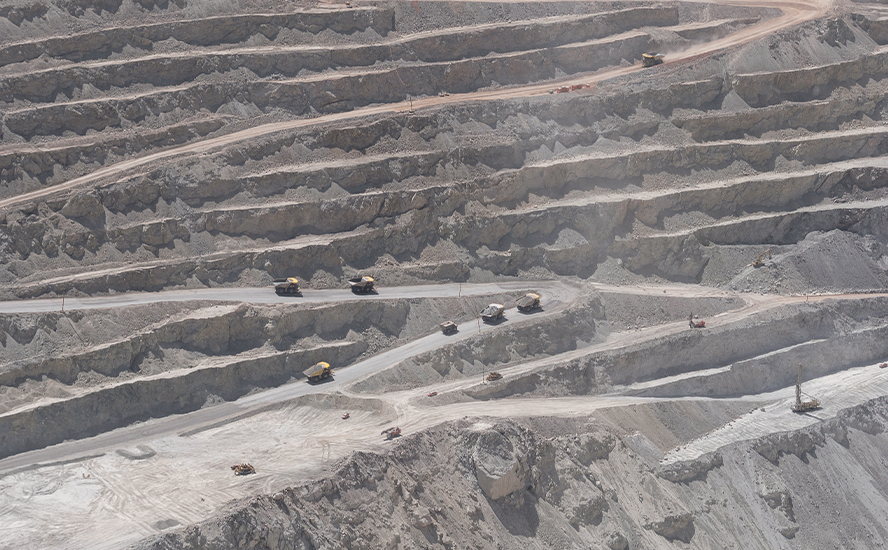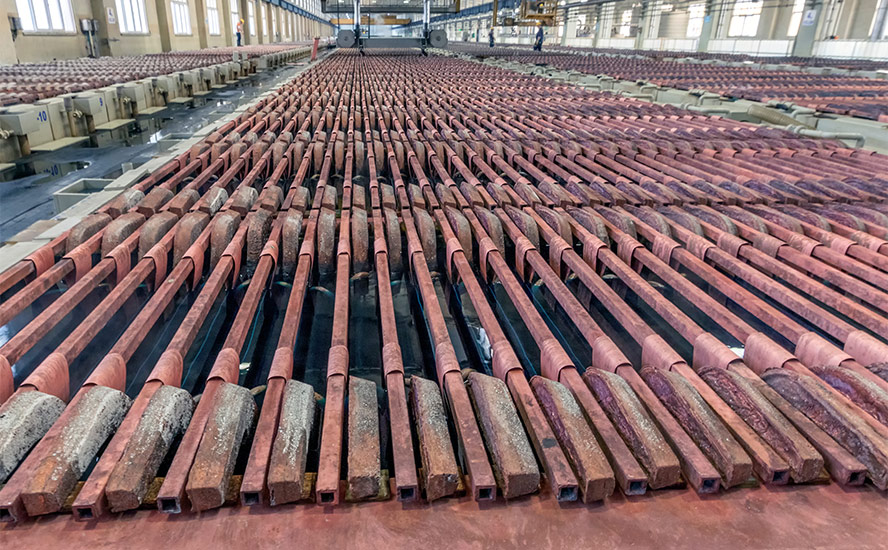Max Resource, eyeballs, prospectivity and entval
2022.04.11
At AOTH we believe Max Resource Corp’s (TSXV:MAX; OTC:MXROF; Frankfurt:M1D2) CESAR property has real potential to be one of the largest copper-silver systems ever discovered.
Max’s CESAR North is 90 kilometers long and north to south hosts three discoveries: AM, Conejo and URU. The project lies on a massive sedimentary system covering a significant portion of the 200-km-long Cesar Basin. The basin was a seabed trapped behind the uplifting Cordillera mountain ranges, and the model suggests that rich copper and silver-bearing fluids flooded up into the basin and deposited as they encountered organic matter on the seafloor.
This district-scale project is situated in Colombia along the Andean Copper Belt, the world’s leading copper-producing area, within a region that enjoys major infrastructure from existing mining operations including Cerrejón, the largest open-pit coal mine in South America.
This includes roads, railways, hydroelectric power, and nearby port facilities from where coal is already being shipped.


Regional exploration strategy
Understanding the structural and long-term nature of the copper market Max decided to focus its efforts on copper. The company started with just 1,500 hectares in a prospective area and built from there.
With so much mineralization exposed in surface outcrops, there was no need to do soil sampling, enabling Max to skip a step; rock chip samples would suffice in proving the extent of the mineralization and the grades. Ground teams were sent out to sample and map copper/ silver outcrops over large areas.
It was a very simple exploration strategy that paid off.
Max started working at the northeastern end of the basin, adding discovery after discovery as they moved southwest. As work continued it became clear that Max was onto Kupferschiefer-style mineralization, now the AM target. This was confirmed by VP Exploration Piotr Lutynski, a Polish geologist who has experience with this type of deposit. A number of experts at the University of Krakow agreed that the AM area was indeed similar to Kupferschiefer.
Poland’s Kupferschiefer deposits are considered to be the world’s biggest silver producer and Europe’s largest copper source. In fact, Kupferschiefer’s silver yield is almost twice the production of the second-largest silver mine. This mine complex has been operating for over 400 years, underground-mining a shallow-dipping zone of copper-silver sediment-hosted mineralization. The deposits average about two meters thickness and extend for kilometers in every direction.
However, despite mapping and sampling the outcrops at AM, the company, correctly in our view, decided that it was going to be too expensive to try and drill out such a large area so they kept looking southwards.
Last year the exploration focus changed when Max discovered Conejo and URU, located in the center and southwestern end of the belt, respectively.
They were no longer exploring a Kupferschiefer style footprint but vertical type structures and mineralization analogous to the Central African Copper Belt (CACB).
Almost half of the copper known to exist in sediment-hosted deposits is contained in the CACB, including Ivanhoe Mines’ 95-billion-pound Kamoa-Kakula copper deposit, located in the Democratic Republic of Congo (DRC).
The area of approved concessions MAX currently holds now exceeds; 70 square km at URU, 116 km² at AM, Conejo at 3.7 km².
URU
URU spans 48 km² over a major structural corridor and remains open in all directions.

See below for a detailed geological model showing a classic sedimentary basin that permits copper deposition in a reducing environment.
Hydrothermal fluids travel up through faults, carrying mineralization from underlying “red bed” volcanic units. Overlying evaporites seal and trap the fluids, allowing them to circulate for millions of years. Copper accumulates where the fluids replace existing, usually organic matter in some of the sedimentary units.

Commenting on the company’s upcoming URU drilling, Max’s CEO Brett Matich said: “URU is to be the first significant drilling event on this previously unrecognized copper-silver belt, since the discovery of Cerrejón, the largest coal mine in South America and the reasons for much of the critical infrastructure in the Cesar basin.”
To assist the drill design and exploration program at URU, the company is conducting a 290 km² LiDAR survey over the five drill target zones spread along 15 km of strike. The goal is to determine high-probability drill targets within the URU zone and maximize the success of what would be the first drill campaign targeting copper-silver deposits in the Cesar Basin.
Watch a video of Dr. Chris Grainger, an expert on Colombian geology and member of Max’s advisory board, showing sub-vertical structures rising hundreds of meters from the river valley floor. Grainger also identifies chunks of primary chalcocite on surface that are 80% copper by weight.
Regarding the ~20m true width structure, Grainger says “From the riverbed, up to where we followed and mapped and sampled the old adits, they go up about 340 meters vertical. And that’s the topographic high so we know they’re going to go vertically down below us, and they continue to our next prospect which is about 1.6 km along the strike.”
Mineralogy is an interesting part of the exploration. With most large copper deposits, the sulfide mineral chalcopyrite is dominant. At URU, there has been no chalcopyrite found. In fact the primary sulfide copper mineral, that is carrying the higher grades, up to 80% copper by weight, is chalcocite; this is considered quite unusual.
From numerous site visits, no one has been able to cite another sedimentary basin that has chalcocite as the primary copper mineral.

A news release from early February highlighted some of the best grades from 45 horizontal channel samples taken over 320m from the riverbed to the top of the hill. They include:
- 4.34% copper over a width of 10 meters
- 3.93% copper over 10 meters
- 3.72% copper over 5 meters
- 3.10% copper over 3 meters
- 3.01% copper over 10 meters
- 2.98% copper over 10 meters
- 2.98% copper over 10 meters
- 2.92% copper over 10 meters
- 2.71% copper over 25 meters
Those are impressive grades.
This week Max reported a high-grade drill target at URU after rock channel sampling targeted three levels of a subvertical mineralized structure.
The lowest level of the structure, seen in the photo below, is 7m of 8.5% copper and 143 grams per tonne (g/t) silver. The next level (and photo) shows a 16.8m channel sample that includes 8.3% copper + 146 g/t silver.



Between the two lower levels and the upper level is a vertical distance of 190m. Here, 24 chip channel samples collected over 48m returned an average value of 5.3% Cu and 44 g/t Ag. Limited outcrop on a ridge line restricted the number of samples that could be taken, and it is visibly more weathered than the lower levels. Again the majority of the samples were primary chalcocite.

It’s easy to get distracted by the grades, which I am certainly not discounting. However, the most important take-away from Max’s news is how much copper and silver could be tucked away at URU.
At URU, the current strike length of sampled copper-silver mineralization is 290m, and it is open to the north-northeast. But, we also learn from the latest news release that there are historical adits in the area, likely the result of Spanish-era prospectors looking for silver. Max can’t yet say how far the adits go up the hill, but they are at least 120m above the upper level. We can therefore say that conceivably, the structure extends up to 410 meters.
Now we understand the strike. How far does the mineralization extend to depth? The distance between the two lower levels of the structure and the upper level is 190m.
We’ll leave it up to you, the reader/ investor/ potential investor to determine how much copper this single structure could contain. (we’ve done our own mathematical mental masturbation and it is a large number). The method is as follows:
Strike x Width x Length x 2.8 (Specific Gravity) x Grade
To determine its value, simply multiply by the current copper price.
CEO Brett Matich explains the significance of the High-Grade discovery at URU in the April 6 news release:
“These first pass results over +290m of strike and +190m of vertical extent suggests this first of five structural URU targets represents a remarkable high-grade copper-silver discovery. In addition, the mineralization in the outcrop exposures appear to extend under overburden cover with open-ended grades of 11.1% and 3.7% copper in the last exposed samples with true thickness of the 7.0m channel, and similarly with 16.8m channel at 8.3% copper open-ended, with either end samples grading 4.2% and 2.7% copper.”
“The Max field team are focused on defining orientation, continuity and grade, throughout the topography, on strike and at depth. In addition, the team is commencing a comprehensive Induced Polarization survey to explore the depth potential of these structures in preparation for the upcoming drilling program,” he concluded.
2022 exploration
The importance of the upcoming IP survey at URU should not be underestimated.
The IP is not just going to be used as a drill targeting survey. That’s because when the IP data is analyzed you are going to be able to see the width, the depth and length of mineralization. A few well-placed drill holes will confirm copper and sliver grades. Remember what I said about the chalcocite. Because it is 80% copper by weight, chalcocite is an excellent conductor; it lights up brightly on a geophysical survey — much more so than chalcopyrite, and your author does not expect to see much of any other type of mineralization. IP will tell Max the width, depth and strike of the target structure.
In the news release, Max says its in-country team will further define continuity, grade and orientation at the URU adits area, with further surface channel sampling on strike. In addition, conduct follow up sampling of the 15-km structural corridor consisting of four additional targets including Southern URU as highlighted below and described in news releases December 8, 2021, and February 1, 2022.
Since we now know how to figure out the math as to how much copper might be in the IP results (remember length x width x depth x SP x grade) we can easily keep track (once we receive ongoing IP results), as Max moves from one URU target zone to the next.
It’s worth repeating: URU contains five target zones, including the first target mentioned in last week’s news. The structure’s near-vertical orientation lends itself to mountain-top mining. If the other four areas are found to be mineralized, we could be looking at more open pits.
Shareholder value = prospectivity
Whether Max, as a small-cap junior, should be JVing the property has come up often in bull board discussions. (The deal with Endeavour Mining, is mostly to prove to the Colombian government that Max has deep enough pockets to move the project forward).
And maybe at this point in the article a reader might wonder why, if what Max has at CESAR is so good, hasn’t it struck a deal with a major?
The answer to that question comes down to shareholder value. According to Brett Matich, Max Resource CEO, and I agree with him, a junior must be careful of watering down the share float by issuing too many shares through private placements. A good example is when a junior tries to drill out a porphyry deposit. A porphyry’s size and normally low grades requires hundreds and hundreds of deep holes to delineate a resource. That can quickly deplete a treasury and force an explorer to go to the market for more funds.
Instead of blowing out the share structure on drilling, Max is taking a more surgical approach, shoring up tonnage through extensive surface sampling, geophysical surveys, and a few well-placed drill holes in each target in the multiple target zones. The idea is to show prospectivity over the entire project’s scale, rather than zeroing in on one area and trying to define a resource with a large drill program.
Max has no intention of doing a resource estimate at this time. As explained there really is no need, after IP and a few drill holes everyone will know how much copper/ silver MAX has at this first target. Simply put, the company is better off spending the dollars showing how large this thing is, doing IP on strike and drilling on strike is going to give a lot more value, a lot more prospectivity to the project than drilling a resource.
As for deal making right now the JV of the whole basin is going to be a lot less attractive to Max shareholders than possibly JVing maybe half a dozen different deposits. Keep it all for shareholders to get maximum benefit.
CEO Brett Matich summed up the strategy well when he said,
“Instead of spending the money on closely spaced drilling and resources over a small area, we spend more money on IP, we start proving the prospectivity over a huge area. We’re very lucky in relation to chalcocite because it lights up, as opposed to chalcopyrite, and with chalco, you need to get down 600-800m. We’re going from topography down 200m in general. That’s an exploration strategy that is sustainable for a junior and exponentially increases the value of our land package.”
“The big company groups are not looking at us putting in a resource, they want us to show how rich this belt is. It’s a very simple exploration strategy, so that’s what we’re going to continue doing.”
And majors also look at market caps. They know MAX came up from a market cap of ~$20M to $90M. So why has that market cap gone up? It’s because they’ve increased the entval, (enterprise value), they’ve ticked off the risk of going from an application into a concession, they’ve increased the prospectivity of their 90-km belt and its value has skyrocketed. And Max will increase its value even more once they start doing IP. Then there’s drilling so they are not only increasing the value, the prospectivity, of where they are working now but for the entire basin including the 90 km Max already holds and in particular the 15,000m of strike remaining at URU.
At URU, ongoing field work will focus on both strike and vertical extensions upwards from the uppermost samples collected to date. The upcoming IP survey will target the vertically lower extensions to this zone, along with the strike extent in areas with little surface outcrops.
Conclusion
So there it is – make a discovery and the land around it dramatically increases in value. By only doing enough geophysics (LiDAR and IP), and then drilling to ground-truth the IP, you hold costs down and maximize the opportunity for share price appreciation. Then you go to the next target, and so on and so on. Meanwhile everybody, current investors, potential investors, institutions and major and mid-tier miners all keep running totals on the in-situ amount of, and value of, the copper and silver Max has found.
Max is already talking a belt with multiple targets, it’s like they have an entire greenstone belt to themselves. But of course management is also keeping a bird’s eye view on the entire basin and that’s where Endeavour Silver (TSX:EDR) comes in, they have the financial wherewithal so that Max can keep building up their land area.
Max Resource Corp.
TSXV:MAX; OTC:MXROF; Frankfurt:M1D2
Cdn$0.80 2022.04.11
Shares Outstanding 131.8m
Market cap Cdn$102.4m
MAX website
Richard (Rick) Mills
aheadoftheherd.com
subscribe to my free newsletter
Legal Notice / Disclaimer
Ahead of the Herd newsletter, aheadoftheherd.com, hereafter known as AOTH.
Please read the entire Disclaimer carefully before you use this website or read the newsletter. If you do not agree to all the AOTH/Richard Mills Disclaimer, do not access/read this website/newsletter/article, or any of its pages. By reading/using this AOTH/Richard Mills website/newsletter/article, and whether you actually read this Disclaimer, you are deemed to have accepted it.
Any AOTH/Richard Mills document is not, and should not be, construed as an offer to sell or the solicitation of an offer to purchase or subscribe for any investment.
AOTH/Richard Mills has based this document on information obtained from sources he believes to be reliable, but which has not been independently verified.
AOTH/Richard Mills makes no guarantee, representation or warranty and accepts no responsibility or liability as to its accuracy or completeness.
Expressions of opinion are those of AOTH/Richard Mills only and are subject to change without notice.
AOTH/Richard Mills assumes no warranty, liability or guarantee for the current relevance, correctness or completeness of any information provided within this Report and will not be held liable for the consequence of reliance upon any opinion or statement contained herein or any omission.
Furthermore, AOTH/Richard Mills assumes no liability for any direct or indirect loss or damage for lost profit, which you may incur as a result of the use and existence of the information provided within this AOTH/Richard Mills Report.
You agree that by reading AOTH/Richard Mills articles, you are acting at your OWN RISK. In no event should AOTH/Richard Mills liable for any direct or indirect trading losses caused by any information contained in AOTH/Richard Mills articles. Information in AOTH/Richard Mills articles is not an offer to sell or a solicitation of an offer to buy any security. AOTH/Richard Mills is not suggesting the transacting of any financial instruments.
Our publications are not a recommendation to buy or sell a security – no information posted on this site is to be considered investment advice or a recommendation to do anything involving finance or money aside from performing your own due diligence and consulting with your personal registered broker/financial advisor.
AOTH/Richard Mills recommends that before investing in any securities, you consult with a professional financial planner or advisor, and that you should conduct a complete and independent investigation before investing in any security after prudent consideration of all pertinent risks. Ahead of the Herd is not a registered broker, dealer, analyst, or advisor. We hold no investment licenses and may not sell, offer to sell, or offer to buy any security.
Legal Notice / Disclaimer
Ahead of the Herd newsletter, aheadoftheherd.com, hereafter known as AOTH.Please read the entire Disclaimer carefully before you use this website or read the newsletter. If you do not agree to all the AOTH/Richard Mills Disclaimer, do not access/read this website/newsletter/article, or any of its pages. By reading/using this AOTH/Richard Mills website/newsletter/article, and whether you actually read this Disclaimer, you are deemed to have accepted it.




